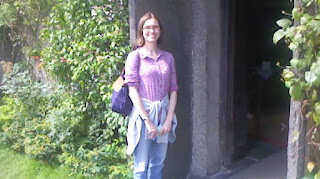
Recently my beloved and I went on a short
holiday to the
Lake District or as it is referred to here: The Lakes. It is interesting how experience and perception shapes our reality. Only a few hours drive from our home on the edge of the beautiful
Yorkshire Dales, The Lakes immediately transported us to a much more distant, even more beautiful world. We happened to go during the hottest part of the sunniest summer we have ever experienced since coming to England nine years
ago. The rolling hills and lakes, the sudden change in landscape, and the alien weather transported us to another country and time, perhaps
Vermont or
upstate New York from summers of our pasts. The uniqueness of our experience became particularly apparent in the weeks following. The first time someone responded ‘Did it rain?’ to my mentioning our first visit to The Lakes, I did not take notice. But it wasn’t long until that I learned that this response is apparently obligatory when someone tells you that s/he went to The Lakes.

We stayed in a sleepy town called
Grange-over-Sands, which is located on a
bay. At high tide, it looks like any other bay, but at low tide, it becomes a giant
shoal. It looks like someone drained the bay. There is a lovely, quiet
promenade that we walked several times. But even that is not the typical Lakes experience as we discovered driving through
Windmere on our way to
Hill Top (
Beatrix Potter’s Farm), where we saw
Disney-sized crowds and traffic. The people in Windmere were in The Lakes too, but they were a world away from us. We drove through serene
passes, no other vehicles in sight, that were once or twice interrupted for just a few seconds by a
Tornado fighter jet zigzagging aerial acrobatics and then it was gone. One of the passes that we drove through, the road was called ‘The Struggle’: my little
Corsa’s 56 horses concurred. We drove down this
country lane that was literally a few centimetres wider than the car and then we found ourselves face to face with a tractor coming toward us. The lane got even skinnier in reverse so that we could turn into a side lane to let the tractor pass. Each day, the 14 hours of August
Cumbrian daylight, unencumbered by the blanket of clouds typically present in the
northern skies, brought a level of warmth and light to the air reminiscent of the
Mediterranean.

In one sense, this holiday was the shortest and the closest to home that we have ever been on. But in another, we have never travelled so far. Or, put another way: No, it didn’t rain.
Photo Credits
Panorama:
Wikipedia
Beatrix at Hill Top:
The Telegraph
My Beloved at hillTop: Me
Me: My Beloved
 Photo Credits
Photo Credits



